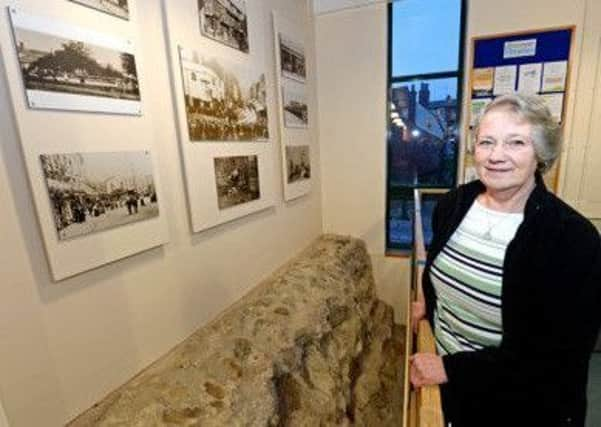Volunteers needed to preserve Roman wall in town


Vital work - funded by English Heritage and Historic England - has now been completed on the 2,000 year-old structure.
It involved clearing vegetation which was in danger of collapsing the wall.
Advertisement
Hide AdAdvertisement
Hide AdHowever, more money is needed to ensure the wall does not fall into total disrepair.
Local historian Sheila Jonkers is a leading figure in the campaign to save the wall.
She said the work carried out in the last 12 months had preserved various sections - but only in the short term.
She confirmed the next stage of preservation work would cost ‘many thousands of pounds’.
Advertisement
Hide AdAdvertisement
Hide AdMrs Jonkers said it was hoped English Heritage and Historic England would supply 80 per cent of the funding, leaving volunteers to raise the remaining 20 per cent.
Mrs Jonkers said: “People have been trying to preserve the wall for the last 20 years but there always seems to have been a hold up.
“We’ve made so much progress in the last 12 months and we must thank English Heritage and Historic England for their support.
“But if we are going to keep the wall for future generations, we need to do more work.
Advertisement
Hide AdAdvertisement
Hide Ad“We need more volunteers - and more donations. We can’t do it all on our own.”
A key report is due to be published at the end of this month outlining how the wall will be preserved - and how much the work will cost.
The report follows extensive examinations by experts.
There is still speculation about why the Roman’s attached so much importance to Horncastle.
The walls are thicker and higher than Lincoln and many major Roman settlements.
Advertisement
Hide AdAdvertisement
Hide AdMrs Jonkers agrees with many historians who believe the walls were part of a string of shore forts - built to offer protection against Saxon invaders during the latter stages of the Roman occupation.
Mrs Jonkers is hoping the preserved walls - and the town’s Roman links - will play a prominent role in the campaign to boost tourism and attract more visitors.